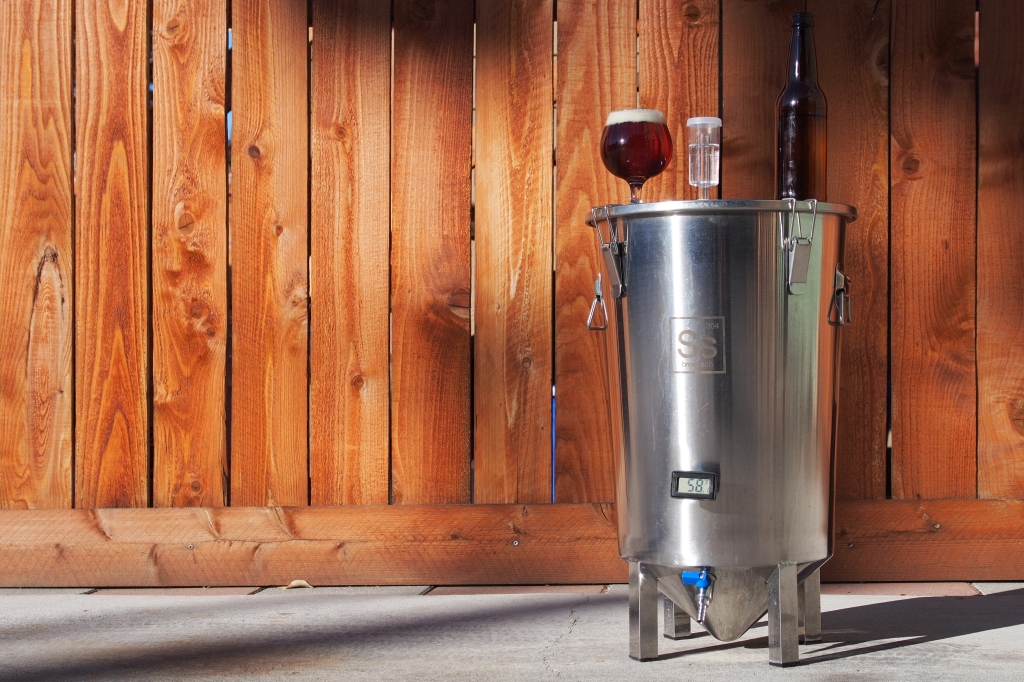
This is stuff I use on the regular and feel comfortable endorsing.
Please note that as an Amazon Associate I earn from qualifying purchases. Feel free to search for them elsewhere if you like my recommendations but don’t want to give me money!
B R E W I N G
Robobrew v3.1 Brewing Machine
This is how I make 99% of my wort, though I don’t use it exactly as intended. I got the cheap-o version (of an already cheap-o Grainfather knockoff) without a pump for recirculation. I took out the grain basket and ordered a BIAB bag from Wilserbrewer (more on that below), meaning I basically use my Robobrew as an electric BIAB system. This setup has its flaws, but it’s cheap, easy, and produces great beer.
Pros: Cheap compared to the Grainfather, generally durable construction, trivially easy to clean, can do everything in one vessel.
Cons: Has trouble maintaining a steady mash temp (even with insulation), control board/wiring may be suspect, company is based in NZ so warranty service is down to your vendor, size (9ish gallons) limits wort gravity/batch size.
Price: $300 (9.25 gallon w/o pump), $450 (9.25 gallon w/ pump), $700 (17 gallon 220V w/ pump)
Wilserbrewer BIAB Bags
If you don’t brew BIAB, you can safely skip this, but even so, it’s worth noting that Mr. Wilser also makes bags for dry hopping. Ok, with that said, are you a BIAB brewer? If so, grab yourself a bag or three. They’re incredibly durable, delivered quickly, and best of all they’re hand-produced on demand to match the dimensions of your kettle.
Pros: Durable, cheap, custom-made to fit your equipment.
Cons: None.
Price: Varies
This big-ass hop spider
No, this has nothing to do with arachnids. It’s a big stainless mesh filter basket you can hang on the edge of your boil kettle to contain hops during the boil. Works great, keeps boil hops out of the fermenter, easy to clean.
Pros: Cheap, easy to clean, reduces mess and waste.
Cons: Not free?
Price: $28
Monster Mill 2
I used to buy grain online, usually from Atlantic Brew Supply (who are absolutely great). Once I moved to Bend, I started buying from the LHBS, The Brew Shop (also lovely people). But once I started brewing more, it made sense to buy my own mill and start getting sacks of grain instead of paying inflated per-pound prices. (Especially since Mecca Grade Estate Malt is right up the road!)
Pros: Rugged, reliable, easy to adjust, lets you crush your grain to the desired level.
Cons: Expensive, even before you add the hopper, a base, and a drill (or motor) to drive it.
Price: $139
F E R M E N T A T I O N
Clear Beer Draught System Floating Dip Tubes
These are the most recent addition to my fermentation arsenal, and I honestly believe they’ve drastically improved my lager and NEIPA game. With these dip tubes, I can ferment and serve in the same keg, which means my beer doesn’t touch oxygen once fermentation begins, preventing oxidative effects. With the optional filter screen, it also means I can dry-hop directly in the serving keg, giving hazy IPAs that extra juicy boost.
Pros: Prevents oxidation, eliminates post-fermentation transfers, allows easy keg-hopping, makes spunding simpler, easy to use, easy to clean, doesn’t get tangled like some other floating dip tubes.
Cons: More expensive than other floating dip tubes (eg. Torpedo).
Price: $42.25 (dip tube only), $49.20 (dip tube + screen), $11.95 (screen only)
SS Brewtech Brew Bucket Fermenters
I have a few of these, both the 7-gallon and 3.5-gallon varieties. Though I’ve moved to keg-fermenting most beers (in conjunction with the CBDS floating dip tubes above) I still really like them, and use them for beers I either plan to bottle from primary, or ones where I want to ferment way less or way more than 5 gallons..
Pros: Extremely well-made from 304 stainless, will last a really long time, great seal, very pretty, super easy to clean, printed volume markings.
Cons: Expensive, can’t see what’s going on inside, rubber feet wear off pretty quickly on the 7-gallon fermenters, detachable base on the 3.5-gallon fermenters makes them tricky to move, printed volume markings can wear off, can’t dump trub.
Price: $129 (3.5 gallon), $199 (7 gallon), $229 (7 gallon w/ thermowell), $369 (14 gallon)
Anova Sous Vide
Since I got the cheap-o Robobrew with no recirculation arm, and since I’m not DIY-y enough to build my own recirc solution, I’ve been using my Anova wand to keep the top of the mash as hot as the bottom. I just slip it on the rim of my Robobrew, outside the BIAB bag, and let it rip at the same temp as the Robobrew itself. Since it’s all stainless, it’s easy to clean.
Pros: Cost-effective recirculation, also makes great steaks.
Cons: Not as effective as actual recirculation.
Price: $100
Inkbird ITC-308 Temperature Controller
Controlling fermentation temperature is one of the most crucial aspects of brewing, so this handy, affordable temp controller is one of the most essential gadgets in my “brewery.” It can do other stuff, too: take a lager right down to lagering steps, maintain the temp in a keezer without its own temperature regulation, or keep your wort warm for kettle souring.
Pros: Cheap, reliable (in my experience), simple to use. And did I mention cheap?
Cons: Support can be iffy, if you need it.
A good heating wrap
These are basically commodity products. Someone buys a huge roll of thermoconductive wrap, cuts it into individual lengths, and attaches a standard plug. Boom, you’ve got a heating wrap. I don’t know how to do that myself, so I buy ’em like a rube. Anyway, I have this one and it’s worked well for me when it comes to heating up my fermenters for certain styles (saisons, kveiks).
Pros: Relatively cheap, heats stuff up, can be controlled with used in conjunction with a thermocouple and a temperature controller like the one above.
Cons: Still feels like you’re getting ripped off.
Price: $23
